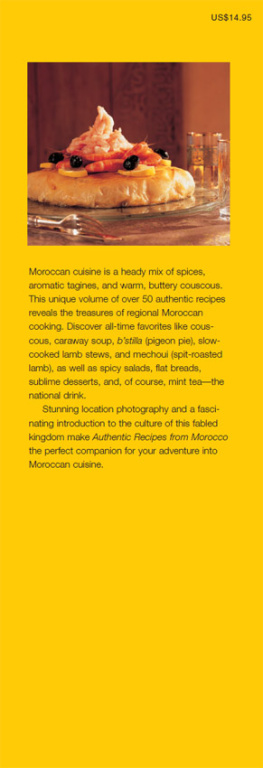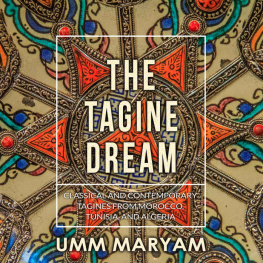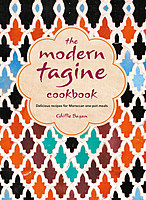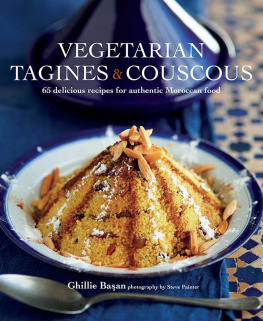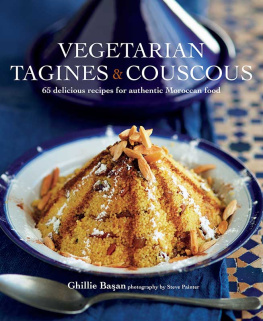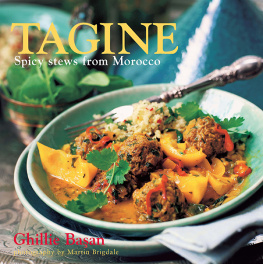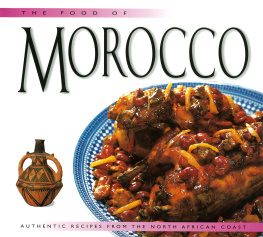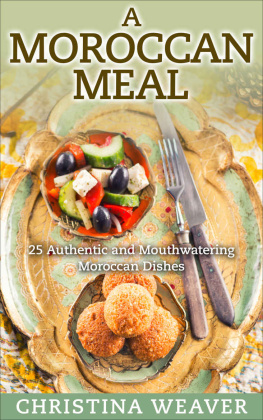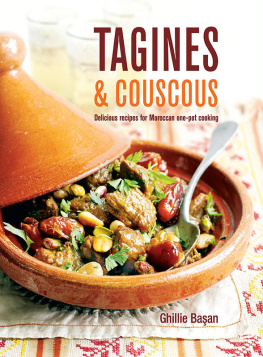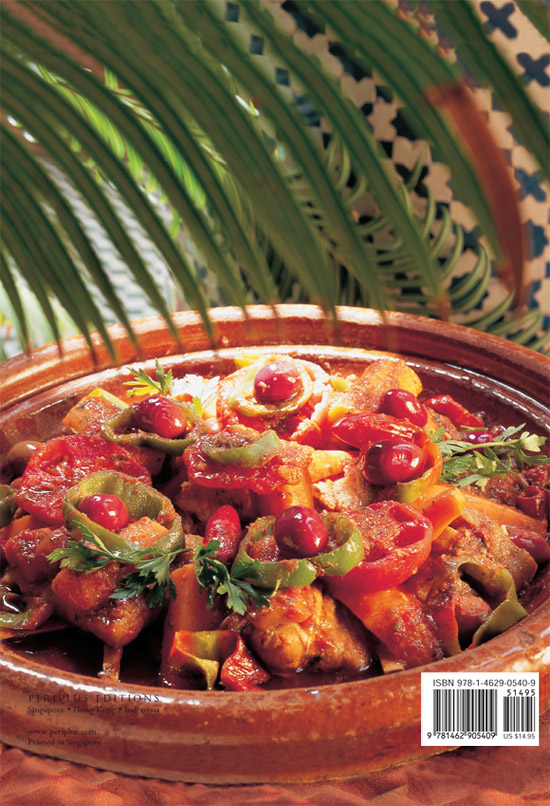Food in Morocco
Moroccan cuisine has been nurtured by centuries of Mediterranean influence
The history of Morocco has always been closely intertwined with the history of the Mediterranean. As a veritable crossroads of civilizationsan asylum for the Andalousian Jews and Arabs who were chased out of the kingdom of Grenada at the end of the 15th century; later a French Protectorate until its independence in 1956Morocco offers an exceptional example of generosity and harmony. This multifaceted country reflects diverse regional, ethnic, and social influences, all of which left their mark on its past. It is this variety that gives Moroccan cuisine its unparalleled reputation. Moroccan cuisine is considered to be one the finest in the world and some of its most celebrated dishes have justly taken their place among the culinary classics of the world.
The Isle of the Sunset, Djerirat-al-Maghrib as the first Arab geographers named the land that would become Morocco, offers the traveler very diverse landscapes. First, there is the Atlantic Ocean lapping the shores in the west; then there are the Atlas and Rif Mountains that enclose a vast amphitheater reaching from the southwest to the northwest of Morocco; further south, the immense deserts that are still inhabited by nomadic peoples; and finally the central regions that spill out to the ocean where alternating plateaus, plains, and valleys have favored the development of culture and the rise of great cities.

This shop in the At Ourir souk (market) east of Marrakech offers tagines cooked over kanounes , a kind of clay cauldron.
The first inhabitants of Morocco were the Berbers who were invaded by the Omeyyad Arab dynasty of conquering warriors. Their empire reached from the Indus to the shores of northwest Africa. They built Muslim Spain and created a great civilization that reigned over the southern half of the peninsula and over Andalousia in particular.
In the eleventh and twelfth centuries, the Almoravid dynasty of Berbers, followed by the Almohad Berber dynasty, succeeded the Omeyyads as rulers of the Muslim territories in North Africa and Spain, and were responsible for the unification of Morocco.
Sub-Saharan Africa also left its mark on Morocco, trading its gold and other riches: the caravans that converged on the North included large numbers of women from Mali or the Sudan who would become the peerless dadas , the cooks who hold the secrets to the Moroccan kitchen.
It is this social and geographical diversity, and the peaceful cohabitation of different ethnic groups, that has enabled such a fine cuisine to evolve.
From north to south, Morocco offers travelers a wealth of contrasting landscapes. From the harsh winters of the Rif Mountains to the blazing caress of the Sahara, each region has developed its own ways with food, even if there are many elements that are shared from one province to the next. Mechoui (barbecued lamb) or kessra (bread) may be found in every region of the kingdom but the recipes have been adapted to suit the conditions in which they are made.
Take couscousthe national dishfor example. In the countryside, the ruggedness of everyday life imposes a sense of humility in the preparation of the dish: dried fava beans replace garbanzo beans while dried meat ( gueddid ) replaces the more tender, subtle, and more expensive fresh lamb.
The coastal regions have developed their own original couscous called kasksou baddaz , in which dried sweet corn replaces the traditional semolina and fish from the Mediterranean or Atlantic enriches the dish.
Austere desert life also contributes its own touch. In the regions where man must often content himself with a few dates and a little milk, couscous is accompanied by small fresh dates ( kuran ) that are baked until almost candied. There are even varieties of couscous made from barley or rice, again reflecting the heritage of the dadas .

The symbol of Marrakech and of Morocco as a whole, Jema el Fna Square bustles every evening with food stalls selling skewered meat, soups, snails, and much more. Jugglers, fire-eaters, snake charmers, storytellers, and monkey trainers add to the nightly spectacle.
In the furthermost regions, meat is rare and dishes are invariably flavored with spices. Here, visual appearance is paramount. All the senses are called upon to appreciate these attractive dishes with their heady aromas. Cooks are as skilled in marrying tastes as they are in assembling colors.
The result is a cuisine that is festive and sensual. Some claim it even possesses medicinal qualities. Arab doctors have always made use of certain foods to cure their patients, without losing sight of the question of taste. One of them, Al-Rasi, hit upon the idea of coating medicinal decoctions in sugar to make the remedy more pleasant.
Religion has also played its part in shaping the eating habits of the Moroccan people. Religious directives addressed the issue of food early on and certain restrictions came into force. Pork is forbidden, as is any animal that has not been sacrificed in a religious riteJews refer to this sanctified meat as kosher, Muslims call it halal . Despite their solemnity, religious celebrations are also at the root of a number of original recipes that are served at specific times of the year. For example, it is with harira that the fast imposed by the month of Ramadan is broken every evening. This soup, both delicious and nourishing, soothes the hunger of the day and brings members of the family together. On these evenings, and much to the delight of the children present, pastries such as grioch , shebbakiya , selou , and sfenji are also served.
It is in the great imperial cities that the Moroccan art de vivre reaches its zenith. Note the words of a civil servant from the finance ministry in 1885: Thus at last, Great Chamberlain, will the preparations to welcome the Sultan be concluded. No fewer than thirty-three dishes will follow: salads, couscous, pastilla, tagine of poultry, meat, fish []. Scoundrels from backwater provinces will be left speechless before such abundance and magnificence and they will admire with near religious devotion the white bread served for the occasion.
Large meals, or diffa , follow an immutable ritual: salads are served one after the other and then make way for the famous pastilla (pie) of pigeon. This is followed by mechoui (barbecued lamb), various tagines, couscous, and, finally, mouthwatering pastries.
A flask of scented water is always passed among guests so they may wash their hands and rinse their palates. Finally, guests enjoy a glass of mint tea, the gratifying conclusion to any great diffa worthy of the name.
Opening the doors to Morocco, we enter a world of tastes and colors that reveal great richness and incomparable skills. In doing so, we perpetuate an authentic tradition, a refined and unequaled celebration of the senses.

Mint tea, Moroccos national drink.

The valley of Tinerhir, east of the High Atlas Mountains.

